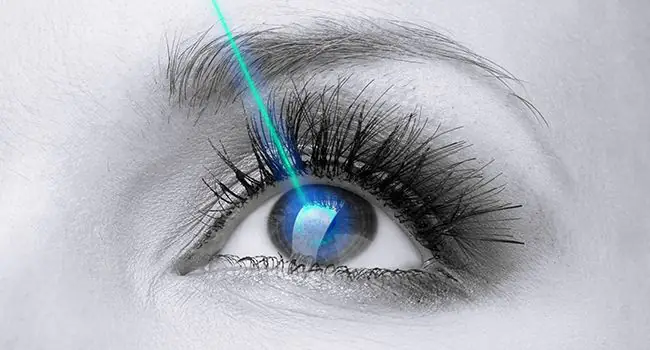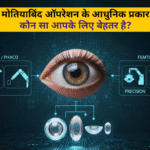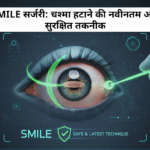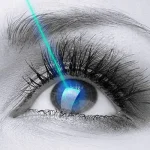Laser vision correction has evolved significantly, offering patients multiple options to reduce their dependence on glasses or contact lenses. Two of the most advanced procedures available today are SMILE vs Contoura Vision. Both techniques provide improved visual outcomes but differ in their approach, technology, and suitability for patients. Understanding these differences is crucial for individuals considering refractive eye surgery.
This article explores SMILE vs Contoura Vision, comparing them across various factors such as procedure, accuracy, recovery, eligibility, risks, and cost. By the end of this article, you will have a clearer understanding of which option may be more suitable for your vision correction needs.
Understanding SMILE and Contoura Vision
What is SMILE?
SMILE (Small Incision Lenticule Extraction) is a minimally invasive laser eye surgery designed to correct myopia (nearsightedness) and astigmatism. Unlike traditional LASIK, SMILE uses a femtosecond laser to create a small disc-shaped tissue (lenticule) within the cornea, which is removed through a tiny incision. This method reshapes the cornea and corrects refractive errors without creating a corneal flap.
The benefits of SMILE include:
- No flap creation, reducing flap-related complications.
- A smaller incision leads to faster healing.
- Less impact on corneal nerves, reducing the chances of dry eye symptoms.
- Suitable for individuals with active lifestyles who may be prone to trauma.
However, SMILE is primarily effective for myopia and astigmatism, with limited correction for hyperopia (farsightedness).
What is Contoura Vision?
Contoura Vision is an advanced topography-guided LASIK procedure that enhances the precision of corneal reshaping by using a detailed mapping system. This technology corrects vision based on an individual’s unique corneal irregularities rather than a standard prescription. Contoura Vision reviews suggest that many patients experience sharper vision compared to conventional LASIK.
The key advantages of Contoura Vision include:
- Personalized treatment based on corneal topography.
- Improved contrast sensitivity and reduced glare.
- Potentially better than 20/20 vision in some cases.
- Suitable for patients with myopia, hyperopia, and astigmatism.
While Contoura Vision provides enhanced visual clarity, it involves flap creation, which may lead to a longer healing process and a slightly higher risk of dry eye symptoms than SMILE.
SMILE vs Contoura Vision – Key Differences
Procedure and Technology
- SMILE is a flapless, minimally invasive procedure using a femtosecond laser to create and extract a corneal lenticule.
- Contoura Vision involves creating a corneal flap and using an excimer laser guided by corneal topography data to correct refractive errors.
Accuracy and Visual Outcomes
- SMILE offers stable results for myopia and astigmatism but does not correct higher-order aberrations as precisely as Contoura Vision.
- Contoura Vision provides customized corrections by addressing corneal irregularities, leading to improved contrast sensitivity and sharper vision.
Recovery and Healing Time
- SMILE has a shorter recovery time due to its minimally invasive nature, with most patients resuming daily activities within a few days.
- Contoura Vision requires slightly longer healing due to the corneal flap creation, but patients often report clearer vision within 24 hours.
Suitability and Eligibility
- SMILE is suitable for patients with myopia and astigmatism but not for hyperopia or those with significant corneal irregularities.
- Contoura Vision is ideal for patients with myopia, hyperopia, and astigmatism, especially those with corneal surface irregularities.
Risks and Side Effects
- SMILE carries a lower risk of dry eyes as it preserves corneal nerves better than LASIK.
- Contoura Vision has a higher risk of dry eyes due to the flap creation but provides better contrast sensitivity and quality of vision.
Cost Considerations
- SMILE tends to be slightly more affordable than Contoura Vision, but prices may vary based on location and clinic expertise.
- Contoura Vision’s cost is generally higher due to its advanced mapping technology and customized treatment approach.
Tabular Comparison of SMILE vs Contoura Vision
| Feature | SMILE | Contoura Vision |
| Procedure Type | Flapless, minimally invasive | Flap-based, topography-guided |
| Correction Type | Myopia, astigmatism | Myopia, hyperopia, astigmatism |
| Precision | Effective for standard prescriptions | Customized for corneal irregularities |
| Recovery Time | Faster, minimal discomfort | Slightly longer due to flap healing |
| Dry Eye Risk | Lower | Higher due to flap creation |
| Visual Clarity | Effective | Potentially better than 20/20 |
| Cost | Generally lower | Contoura Vision cost is higher due to advanced technology |
Which One Should You Choose?
The choice between SMILE vs Contoura Vision depends on individual needs, eye condition, and expectations from the surgery. Patients with mild to moderate myopia who prefer a minimally invasive procedure may opt for SMILE. On the other hand, those seeking highly customized vision correction with enhanced clarity might consider Contoura Vision. Consulting an ophthalmologist is essential to determine the best option for your eyes.
Conclusion
Both SMILE vs Contoura Vision offer effective laser vision correction but differ in their technology, procedure, recovery, and suitability. While SMILE is minimally invasive with a quicker recovery, Contoura Vision provides more precise visual outcomes. Consulting an eye specialist is the best way to determine which procedure aligns with your vision goals.
See the world more clearly. Book a consultation today! Schedule Your Eye Check-Up!
FAQs
Both procedures are safe and FDA-approved. SMILE has a lower risk of dry eyes and offers a more stable corneal profile strength in the long run, while Contoura Vision offers enhanced visual clarity. A key advantage of SMILE remains that it is a flapless procedure and thus has no possibility of flap-related complications.
Recovery from SMILE usually takes a few days, while Contoura Vision may provide clearer vision within 24 hours but requires careful post-operative care.
Contoura Vision’s cost is typically higher than SMILE’s due to its advanced mapping technology and customization. Prices vary based on location and clinic.
Yes, both SMILE and Contoura Vision can correct astigmatism, but Contoura Vision may offer more precise results for corneal irregularities.
Individuals with thin corneas, unstable prescriptions, or particular eye diseases may not be suitable candidates. A thorough eye examination is required.





